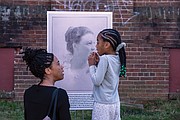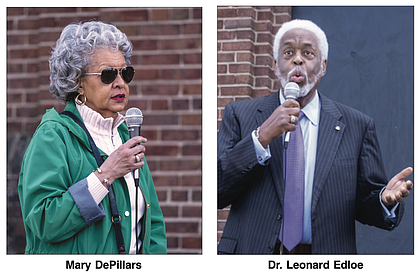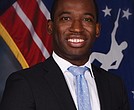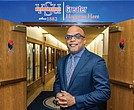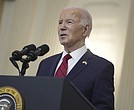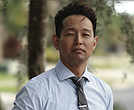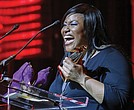Community shows up for former hospital
George Copeland Jr. | 3/7/2024, 6 p.m.

For Edwina Richmond, Richmond Community Hospital has been a critical part of her life for years.
A retired college professor currently living in Henrico County — but with deep family ties to the city and its education — she was born 76 years ago at the hospital, which opened in 1932 to provide service for African-Americans unable to get care at whites-only hospitals.
Ms. Richmond remembered getting her tonsils removed at the hospital and recalled the integral role it played in the neighborhood and the community’s welfare as she grew up before it moved to the city’s East End in 1980.
Ms. Richmond believes the hospital is a landmark that should stand proud in Richmond forever, a testament to the work and sacrifice of those who built it and the benefits it provided people like her.
“It’s in our family and it’s very important to me,” Ms. Richmond said. “It’s crucial to preserve this history.”
Ms. Richmond‘s story was just one of dozens shared Sunday afternoon during a rally calling for the hospital’s preservation. Virginia Union University plans to destroy it as part of a new housing project.
The rally, organized by Viola Baskerville and other Richmond residents, saw about 75 people gather on the front lawn of the former hospital, which sits on Overbrook Road, to advocate for its importance through testimony and oral history.
While time and neglect have marred the hospital’s exterior, with spots of mold on brown brick walls and its stone front steps cracked and broken, attendees brought welcome kinship and warmth to the site as they discussed the building’s past and its potential future.
“We are the community of conscience,” said Ms. Baskerville, who stressed that a compromise could and should be found in VUU’s project for the site.
“We are slowly gathering information, gathering people who are interested in this building, making sure that it is not demolished but that there is a path forward with rehabilitation and adaptive reuse,” she said.
The rally was the latest community response to VUU’s plans, announced in early February, to demolish the hospital as part of a $42 million project created in partnership with the New York-based Steinbridge Group to build up to 200 general-use housing units across 2 acres on the north side of the college’s campus.
Concern and criticisms raised about the project have led some local officials and organizations to also voice their opposition to the hospital’s demolition and offer alternative solutions, including the Black History Museum and Cultural Center of Virginia and the Richmond Crusade for Voters.
Rally attendees, including concerned residents, community advocates, local political figures and experts in the historical, cultural and medical importance of the hospital, were more than eager to explain why the building should stay.
Their stories were recorded by freelance videographers. Those present were encouraged to provide donations to support the organizers’ efforts and to come forward with ideas for how the building could be used in the future.
“Richmond Community Hospital left you with the feeling that you belong and that you were loved because you were well-cared for,” said VUU alumna Mary DePillars, who served on the Richmond Community Hospital Foundation’s board. “It’s incumbent on all of us to stand up and speak up.”
Some speakers, such as Ms. Baskerville and Richmond School Board member Kenya Gibson, questioned the lack of care for the hospital and other Black community touchstones in the city while other Richmond institutions and buildings faced little trouble getting attention and resources.
“We must build monuments that tell our shared history,” Ms. Gibson said. “A history that reaches across racial and economic barriers, a history that tells us that we have a right to live in our chosen communities.”
Many others, such as Ms. Richmond, Dr. Leonard Edloe, a theologian and retired pharmacist, Muriel Miller Branch, an author and former librarian, shared their long-standing connections to the building where they were born, received necessary medical care or developed in their own medical careers.
“I thank you all for the stories of how we put our pennies, nickels, dimes and quarters together to build this place,” said Dr. Edloe, who was born in the hospital, had two surgeries there and served as a physician and later member of its board when it moved.
“This place is historic and it’s sacred, so just keep on pushing,” he said.
Other attendees simply celebrated the sight of so many people assembling in defense of the hospital and its value to Richmond. Many there committed themselves to advocating for the building in whatever ways they could.
“It’s a blessing to see so many people that care about the community,” said Wilhelmina Nobles, a 96-year-old resident who attended the rally with her great-niece, Chantelle Taylor.
It’s unclear if VUU will change its plans to remove the hospital in the wake of the community pushback.
Cleve V. Tinsley IV, faculty director for VUU’s Center for African American History and Culture, attended the rally, which was approved by the college. He appeared to be inspired by the testimonies and is perhaps ready to help preserve that part of the hospital’s history.
“Hearing from local Richmonders has meant a lot for us,” Dr. Tinsley said. “We’re here to form partnerships with other community and cultural institutions and also partners interested in making sure these stories are told correctly.”
However, Dr. Tinsley also was clear that how the hospital itself would be handled was something that VUU’s executive and administrative leaders ultimately must address.
Rally-goers, for their part, were much more confident that ensuring a better future for the hospital was possible, and ultimately left in higher spirits.
“I’m so glad that people have shown concern about preserving history,” Ms. Richmond said. “This is just the beginning of the response to the community coming out to support the hospital, and we hope to see more and more people come out.”


